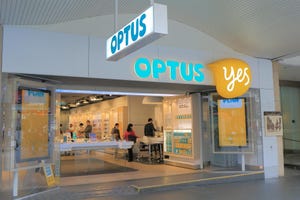Amdocs plugs another hole with $188M takeover of Mycom OSI
The acquisitive Israeli software vendor joins several big rivals that have already swooped on service assurance players.

Tiny Mycom OSI does not seem like it would be an especially appetizing meal for Israel's Amdocs. The British company will boost sales at Amdocs by less than 1% annually, noted the vendor of telecom software when announcing its $188 million takeover this week. AT&T buys Time Warner this deal is not.
But regular snacking rather than the occasional binge has become the routine approach to acquisitions for Amdocs. Since 2018, it has swallowed delicacies including Projekt202 (paying $54 million), UXP Systems ($80 million), TTS Wireless ($50 million) and Sourced Group ($75 million). Takeovers during this period of Vubiquity ($224 million), Openet ($180 million) and now Mycom OSI rank among its bigger deals.
Figure 1: Amdocs' share price ($)  (Source: Google Finance)
(Source: Google Finance)
The strategy is partly to plug holes in the Amdocs portfolio and stamp out threats. Ireland's Openet, for instance, made just $70 million in annual sales at the time of the 2020 takeover, compared with the $4.2 billion that Amdocs generates, but was a persistent nuisance with its superior lineup of policy and charging products. Amdocs had previously tried to neuter Openet in the law courts, alleging intellectual property infringement, before deciding a takeover would eliminate the danger once and for all.
With Mycom OSI, it gains a specialist in service assurance, another gap in its portfolio. As a multiple of revenues, it is paying a lot more for this company than it did for Openet, according to James Crawshaw, a principal analyst with Omdia, who reckons in a LinkedIn post that the purchase price is about five times what Mycom OSI makes annually (about $38 million, then).
Closing the loop
Plugging this service assurance gap looks especially important in the market for business and operational support systems (B/OSS). Orchestration and service assurance used to be distinct product categories in that sector, but the emergence of "closed loop" service assurance has driven them closer together.
"If you want a closed loop system where you get feedback and then make changes for self-healing and so on, you need these two things to be well integrated," Crawshaw explains. "If they are under one roof then integration is going to be easier than if you are taking products from different companies."
Amdocs was up against several other big vendors that had already filled the service assurance hole "to complement their orchestration/fulfilment-oriented OSS offerings," in the words of Crawshaw. They included Oracle (which bought Fedoros late last year), Ericsson (through its acquisition of CENX in 2018) and Ciena (the owner of Centina since 2018).
Want to know more about 5G? Check out our dedicated 5G content channel here on Light Reading.
The Oracle decision to buy Fedoros may have been a catalyst for the Mycom OSI takeover by Amdocs. For service assurance, Oracle had previously partnered with Mycom OSI, which clearly lost a key partner with the Fedoros transaction. Amdocs evidently liked what it saw in Mycom OSI.
"They seem to be doing well," said Crawshaw. "They were quite early into the theme of hosting apps in the public cloud and available on AWS. They sell to large mobile operators and have a solid position."
The Mycom OSI deal has ramifications for Teoco, another service assurance software provider. Just as Oracle had partnered with Mycom OSI, so Amdocs had been relying on a Teoco partnership to address service assurance needs. Recent dealmaking also leaves NetCracker, a subsidiary of Japan's NEC, as the only big OSS vendor without a service assurance offering, according to Crawshaw.
Fattening up
Takeover activity stretching back years has allowed Amdocs to report continued sales growth in a sluggish market. The annual rate of revenue increase has fluctuated between 2% and 4% over the last five years and Crawshaw suspects most of it has come from acquisitions. Amdocs, however, does not break out the moving parts. "It is hard to track what is organic and what isn't," said Crawshaw.
2016 | 2017 | 2018 | 2019 | 2020 | 2021 | |
Revenues | 3,718,229 | 3,867,155 | 3,974,837 | 4,086,669 | 4,169,039 | 4,288,640 |
Revenue growth | N/A | 4% | 3% | 3% | 2% | 3% |
Operating income | 483,141 | 517,333 | 428,307 | 569,746 | 594,758 | 598,693 |
Operating income growth | N/A | 7% | -17% | 33% | 4% | 1% |
Operating margin | 13% | 13% | 11% | 14% | 14% | 14% |
Headcount | 22,751 | 24,237 | 24,381 | 24,516 | 25,875 | 27,176 |
(Source: Amdocs) |
Acquisitions have also made Amdocs bigger in terms of staff numbers. It had an average of 27,176 employees in its most recent fiscal year, up from 25,875 in the previous one. Since 2016, it has gained more than 4,400 employees as its constant grazing on B/OSS wildlife has swelled the workforce. Notwithstanding a blip in 2018, though, operating income has continued to rise, and the operating margin has held steady at 14% for the last three years.
Investors seem to like the story. After dropping to $69.89 last November, the Amdocs share price was trading close to an all-time high of $84.62 yesterday on the Nasdaq, up 8% in the last year. With the service assurance hole plugged, market watchers may be wondering where Amdocs goes next.
Related posts:
— Iain Morris, International Editor, Light Reading
Read more about:
EuropeAbout the Author(s)
You May Also Like












